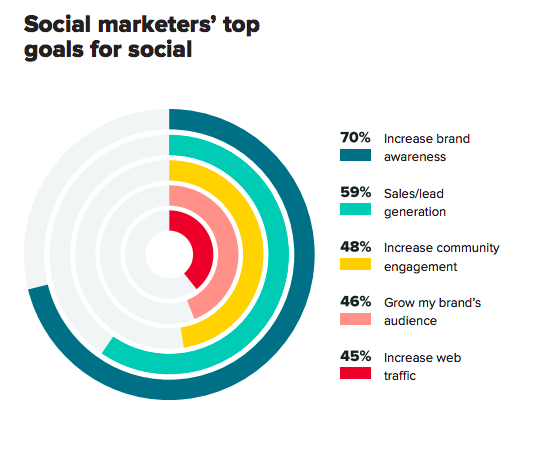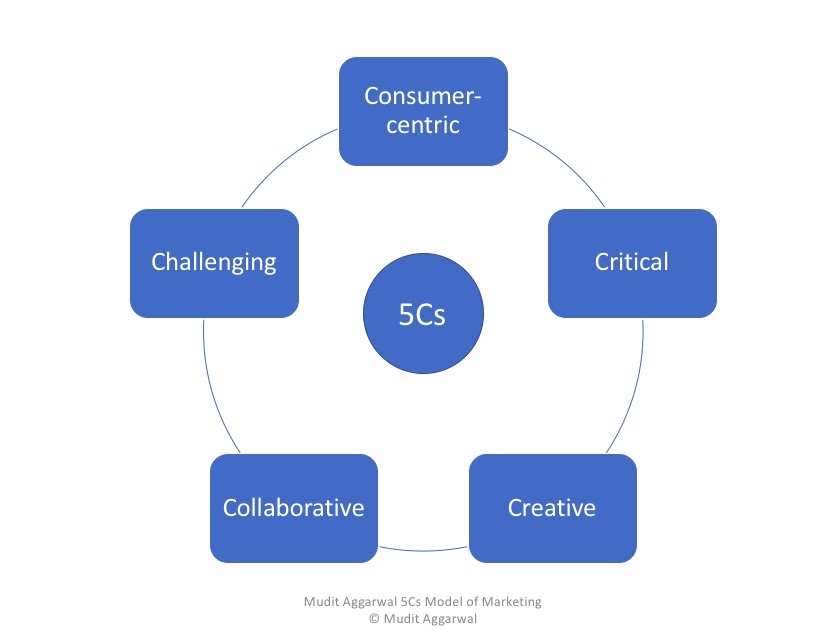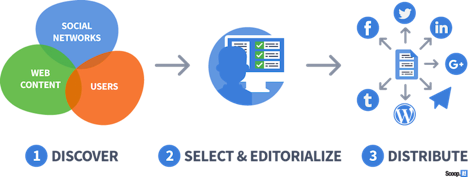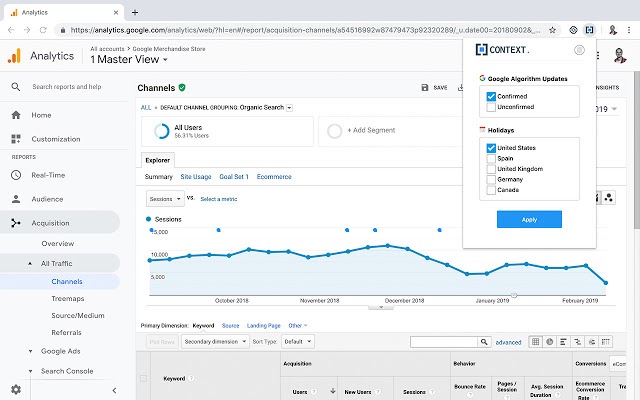
Content marketing is one of the most popular online marketing strategies due to its accessibility, flexibility, and synergy with other marketing approaches. The basic idea is to create valuable content that people want to read, and use that content to generate brand visibility, traffic, and conversions.
The success of the entire strategy is dependent on that qualitative descriptor: “valuable.” Your content has to be valuable for your strategy to succeed. But what is it that makes a piece of content valuable, and how can you tell if your content achieves it?
Content Goals
Different businesses will define value in different ways, because they’ll have different goals for their content marketing strategy. Most times, businesses use content to achieve some combination of the following:
· Brand visibility. Some content is intended to promote the visibility of your brand, introducing it to new people and raising awareness among your customers. It’s a useful effect if you want to encourage customer loyalty or just make your brand known to a wider circle of people.
· Brand reputation. Writing content that exhibits “thought leadership,” or an authoritative stance on an important subject, can improve your reputation. If people enjoy reading your content, and if they respect its accuracy, depth, and entertainment value, they’ll come to like your brand more—and be more willing to buy from you.
· Traffic generation. One of the most important benefits of content is its ability to generate traffic, and it can generate traffic in a number of different ways. For example, if you publish offsite content that contains links to your website, you can generate referral traffic. If you use content as part of your search engine optimization (SEO) campaign, you can generate organic search traffic. If you curate and syndicate content on your social media accounts, you can generate social traffic. You can even generate direct traffic and repeat visitors by building a stronger reputation.
Source: SearchFactory
· Conversion optimization. Content is also a great vehicle for calls-to-action, (CTAs), which motivate your readers to make a purchase, fill out a form, or take some other meaningful action that ultimately leads to revenue. With respect to this point, content becomes directly valuable; if it’s sufficiently persuasive, it can generate revenue for your brand.
· Community building. Content also works well as a tool for community building. If you encourage group discussions, publish content regularly, and interact directly with your followers, your content can serve as the basis for a thriving community around your brand.
Source: SproutSocial
11 Hallmarks of Effective Content
Regardless of what your goals are, effective pieces of content tend to have many similar qualities.
These include:
1. Original ideas. First, your content needs to present some kind of original idea. There are millions of people creating content on the web, so if you’re saying the same things as everyone else, you’ll easily go unnoticed. Try making a bold claim or a unique argument, or presenting a brand-new idea. If you can’t come up with something truly original, try coming up with an original response to an existing idea.
2. An immediate “grab.” People have short attention spans, especially on the internet. If you want your content to get noticed and read, you have to have some kind of an initial grab. For conventional articles, this means writing a compelling headline—even if that means delving into “clickbait” territory. Your headline should be accurate to the content you’re writing, but it should also pique reader interest—and potentially evoke a response.
3. Specific facts. Good content also offers reliable facts and/or statistics. Specific facts strengthen your arguments, and make your content more authoritative. As an added bonus, these facts are more likely to attract links as citations in other work; other content creators will want to link to your work, helping you generate more referral traffic and building your domain authority so you rank higher in search engine results pages (SERPs).
4. Sufficient length. There’s no minimum or maximum for “valuable” content length, but in general, longer content tends to perform better. Longer content gives you more room to provide exhaustive arguments and additional details. The majority of content on the internet is less than 1,000 words, so writing long-form content also helps you stand out. That said, short content also has a place if you want to cover a topic concisely.
5. Mixed media. Written content is the dominant form of content online, but you can attract more followers and improve engagement with your work by including other mediums. Improve your written content with images and videos, or consider starting an audio-based podcast to capitalize on a different audience. Use a mixture of different formats and mediums to see the best results.
6. Readability. If you’re writing content, you need to make sure it’s easily readable. You can improve readability with formatting, like writing in short paragraphs and using bulleted and numbered lists. However, it’s also important to write at a relatively low reading level, and ensure all your sentences are coherent.
7. An objective benefit to the reader. What does a reader stand to gain from reading your article? Are you teaching them a new skill? Are you giving them an update they need to work effectively? Are you answering a question they have? Solving a problem? Are you helping them think about a complex problem in a new way?
8. A call to action. If you want your content to generate conversions (like purchases or completed forms), you need to master the art of presenting calls-to-action (CTAs) in your work. Good CTAs blend in with the content—they aren’t painfully apparent—and they give readers direct instructions on what to do next. That said, not every piece of content needs a CTA to serve its purpose.
9. Persuasiveness. In many cases, the value of a piece of content is increased because of its persuasiveness. Through skilled argumentation and objective reasoning, your blog post could persuade someone to change their mind on a given topic, or convince them to move forward with a purchase they’ve been considering for a long time.
10. Opportunities for engagement. Content can also be valuable because of its ability to inspire engagement. In other words, can this content get your followers to talk to each other (and to you)? Does it make people want to share it? Engaging content tends to be controversial, or at least debatable. It also evokes an emotional response in many cases. You can also make your content more engaging by asking probing questions, or by intentionally starting a group discussion.
11. Entertainment. Some forms of content are almost exclusively entertaining, forgoing research in favor of humor. However, it’s even more popular to include elements of entertainment in otherwise valuable content. For example, you can make a few jokes while discussing an important topic, or present the content in the form of a dialogue or story so it’s easier to digest.
Your content’s value also depends on your consistency with the strategy. For example, regularly publishing high-quality content on a variety of different publication channels will gradually increase your brand visibility and public recognition of your expertise. Followers will know to check your accounts and channels for new content routinely, and they’ll come to hold your latest work in even higher regard.
Source: Muddit Aggarwal
Curation and Distribution
Let’s say you’ve developed a few pieces of incredible content. What good is it going to do if there’s nobody around to read it?
If you want your content to be more valuable for your brand, you need some way to distribute it. Hypothetically, if your content is sufficiently valuable to readers, they’ll share it with other people and spread word about the authority of your brand. However, you still need platforms through which you can generate initial interest.
One of the best options here is distribution via social media, where you can reach a wide audience of both followers and new people who have never heard of your brand.
However, you can also distribute your content via email marketing, paid advertising, or other promotional methods.
If you’re interested in building your reputation on social media, or establishing your authority before circulating your own content, you can curate the content of other creators. Here, the idea is to find valuable pieces of content that other people have created, then share them to your followers while simultaneously adding value—such as providing commentary, or offering a counterargument to the main point of the article.
Content curation is also a way to produce content for your own website or blog, which we’ll cover in the next section.
Costs and ROI
So far, we’ve talked about what makes a piece of content “valuable” in terms of its appeal to readers, and in terms of how much revenue it can generate for your brand. But we also need to think about the other side of the equation—the costs of producing content.
In marketing, one of the most important metrics to measure is your return on investment (ROI). This is a measurement of how much value something returns to your organization, compared to how much it cost to create. It’s important to take this into consideration when developing your content, and ascribe “value” based on relative ROI.
For example, a $100 piece of content might generate $200 of value, while a $200 piece of content might generate $250 of value. Technically, the latter piece of content is more “valuable” in the sense that it creates more total revenue, but the former piece of content yields a higher comparative return.
Accordingly, you can create more valuable content for your brand by considering the amount of time, money, and effort it takes to produce content. If you want to see a higher ROI for your content strategy, you can try to maximize the appeal of your content while minimizing your investment.
One of the best strategies here is content curation, wherein you’ll collect the existing work of others and assemble it in your own original way. For example, you can create a “top 10” list that reviews some of the best products or services on the web, or you can add commentary to an existing video or post.
You can also host other creators’ pieces of content on your site, or provide links to many videos or lists of reading materials.
Subjective Differences
Another important consideration to bear in mind is the subjective nature of content value. There are pieces of content that have gotten lots of shares and links, despite not offering much in the way of original ideas, and there are amazing pieces of content that have gone practically undiscovered.
There are many variables that can influence the true value of a piece of work, including:
· Industry. Different industries have different norms and standards for what qualifies as “good” content. For example, some industries require much deeper dives and original research, while others can get away with shorter, “fluffier” content.
· Timing. Your timing also matters, though it’s sometimes beyond your control. If you write a piece of content that reacts to a current event, you can take advantage of public interest. If you’re too late on a topic, or if your topic is obscured by another, more exciting event, you could get lost in the shuffle.
· Personal taste. Remember that individuals have varying tastes, and they don’t always conform to your expectations of them. You might find something funny, or interesting, or helpful in your personal life, but there’s no guarantee someone else will think the same.
The Importance of Measurement and Analysis
Because content value is somewhat subjective, and because value is hard to measure, one of your greatest keys to content marketing success is committing to measurement and analysis. It’s on you to consistently measure the results of your content efforts, including traffic levels, conversions, and brand awareness—as well as public reception to your content.
One of the best tools here is Google Analytics. It’s completely free, and it can help you measure almost every kind of traffic or onsite user behavior you can think of.
Source: Chrome.Google
It’s also a good idea to conduct and review user surveys, where you can collect data about reader preferences and analyze your past efforts. A good service here is SurveyMonkey, which is free to get started.
Source: SurveyMonkey
Be prepared to experiment with different types of content and different approaches. It’s going to take time to find the right rhythm to create consistently valuable content.
Are you interested in improving your content marketing strategy? If so, you’ll need a tool that can help you research, curate, and publish the best possible content. Sign up to try Scoop.it for free today, and give your content curation strategy the boost it needs!








